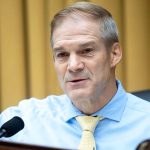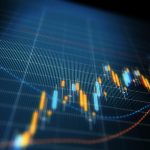While some are convinced that the Federal Reserve has steered the economy to a soft landing, stocks haven’t been the better for it over the past month. Recent declines could be a sign that the central bank has overstepped in ways that could bring pain in the near future.
As the Fed has sought to rein in rapidly rising prices by raising interest rates, seeking to reduce demand for goods and services, it has had to balance the risk of going too far against the possibility that it would fail to fully stamp out inflation. Now that the data are showing economic growth is slowing down—a positive sign in the inflation fight—the question is becoming whether the bank can pull back in time to avoid major damage.
David Rosenberg, founder and president of market strategy and analysis provider Rosenberg Research, argues that given bank’s laserlike focus on inflation to the exclusion of other factors, the answer is likely not. A range of indicators, from data on confidence to the price of oil, indicate others share that concern.
Inflation has of course been a huge issue for many Americans in recent years, evident in any trip to the grocery store, and hopes that we might get back to the prepandemic prices of just a few years ago seem like a pipe dream. But Rosenberg argues that the narrative of “sticky” inflation overlooks the big progress that has already been made.
Using the yield on the five-year Treasury inflation-protected securities, or TIPS, as a guide, he notes that the market now expects inflation of 2.18% over that period, down from 2.33% at the start of the year and near the Fed’s own target.
At the same time, nominal yields—which include the inflation expectation plus the so-called term premium—have jumped by 0.75 percentage point to their highest level since 2007. That is a sign something besides inflation, such as a slowdown in growth, is worrying the market.
More to the point, the Fed’s view that the economy can hold up as it pushes inflation down further toward its target, after rapidly raising rates as high as it has, doesn’t fit with current data, Rosenberg wrote.
For one, the resiliency of the consumer looks shakier the longer one looks. Not only are student-loan payments resuming, but consumer confidence is falling. Gasoline prices, rather than a greater willingness to spend, were the big driver of August’s higher retail sales.
“Real disposable incomes are down three months in a row and at a -1.7% annual rate,” he wrote. “So, the income recession has already begun. The only reason spending has yet to follow suit is because of prior fiscal stimulus which has ended, and the boom in credit card usage.”
U.S. credit card balances crossed the $1 trillion mark this summer as more Americans turned to debt to fund their everyday needs. Delinquencies are climbing as that strategy becomes increasingly untenable.
Rosenberg also pointed to oil prices, which have fallen from recent highs, putting predictions that prices could reach $100 per barrel on the back burner again. The decline reflects mounting concern that a recession that would reduce demand could be on the way.
“The Fed (and the Bank of Canada even more) seems to have no idea as to the damage they have inflicted on the economic outlook,” he wrote.
Then there is the fact that the housing market remains unaffordable for many.
In the week ended Sept. 29, applications for mortgages fell 18.5% from year-ago levels even though higher interest rates had already reduced the number of people seeking the loans at this time in 2022. The latest decline puts applications on par with levels from the mid-1990s.
The upshot is that while the central bank is achieving its goal of demand destruction, the cost may be too high, he said.
Nor is he the only one feeling pessimistic. The Conference Board Consumer Confidence Index declined again in September, slipping back below the level of 80 that indicates a recession is on the way. The think tank is anticipating a short and shallow economic contraction in the first half of next year. Rosenberg said he thinks the recession will hit in the first quarter of 2024.
A further sign of concern is that the IBD/TIPP Economic Optimism Index fell to a 12-year low in October. Its reading for the six-month outlook is worse than it was during the 2008-2009 financial crisis, while the IBD/TIPP Financial-Related Stress Index has climbed to its highest level since late 2008.
All that could spell trouble for stocks. More than one strategist has noted the similarities between today’s tech-driven market and the lead-up to the dot-com bust. As Gavekal Research chief U.S. economist Will Denyer noted last week, after 2000, “when activity slowed, the Fed did ease aggressively, but its rate cuts failed to prop up the equity market.”
Of course, there are plenty of differences between the turn of the century and today. A recession hasn’t arrived despite arguments that one is overdue.
That could give bulls optimism that this year’s party for the
S&P 500
isn’t over. Yet economic data suggest those good times are already on borrowed time.
Write to Teresa Rivas at [email protected]
Read the full article here




